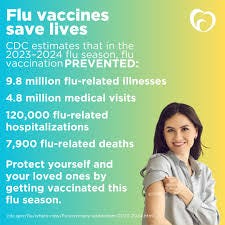When I started family practice in ‘99 I held flu shot clinics for several years for patients in the rural community of Lansdowne, Ontario, where I worked. I was taught that “Flu Shots Save Lives”. The government advertised them to my patients. Demand was high. The pay was good.
Over the years I became more skeptical about vaccines, including flu shots. What does the science say? We learned during COVID that public health messaging is often very disconnected from facts and reality.
When I wanted to know the truth behind flu shots, the first person I thought of was Dr. David Zitner. A retired family doctor and expert in medical data science, David is also the Senior Healthcare Policy Fellow at the MacDonald-Laurier institute. Even better, through his work with CURAC (the College and University Retirees Association of Canada) he has specifically dug into the question: should we be promoting flu shots. I’m glad he described himself as a gadfly, so I didn’t have to! But he’s just the kind of gadfly that we love at Free Speech in Medicine.
We cover many topics, and some may fly by fast for non-medical listeners. Some links of great interest:
Christine Stabel Benn’s TED talk on vaccines was controversial and thought-provoking, and for more detail her discussion with Dr. Jay Bhattacharya is worth the time.
the CURAC paper on flu shots is directly apropos
TheNNT.com is a website well worth bookmarking. “Number Needed to Treat” is essentially the odds that a drug will help you if you take it (typically calculated for a 5-year period). eg: if the NNT is 100, there is a 1 in 100 chance the drug will help you.
For those of you too young to have grown up with friends with phocomelia, you can read about the thalidomide debacle here. It was a disaster that should have made the medical profession more careful and humble.
The Cochrane Collaboration (the same organization that has steadfastly refused to let the strong political winds blow away their conclusion that masking does not prevent respiratory virus transmission) also has concluded that flu shots make little difference.
As Dr. Zitner mentions, some research suggests that we may be trading short-term benefit for long term harm with repeated flu shots.
Dr. Danuta Skowronski’s work that suggests that those who had been vaccinated in previous flu years were more at risk for contracting H1N1 back in 08-09 is interesting, and scientifically important.
Dr. Zitner mentions a court case in which the NS Court of Appeal did not think much of Dr. Strang’s “expertise”. Assertions backed by qualifications are not “evidence” or “The Science”.
To summarize, we don’t know that “Flu Shots Save Lives!” Are certain patients (old and frail, on chemo, those affected by lung disease) more likely to see benefit than harm? Are certain patients (younger, healthier, fewer comorbidities) more likely to see harm than benefit? Before vaccinating everyone willy-nilly, we should know the answers.
Given that flu shots are of dubious benefit, it seems likely that the large amounts of government money going towards producing, buying, distributing, and administering these shots every year would do more good somewhere else in the healthcare system. (Or, God forbid, simply reducing government expenditure). I have come to the conclusion that whatever the nitty-gritty detail on what subgroup might benefit, I resent my tax dollars going to promoting an intervention of unproven benefit. And until someone from public health answers Dr. Zitner’s request to provide the proof behind the “Flu Shots Save Lives!” claim, I’ll be skipping mine.










